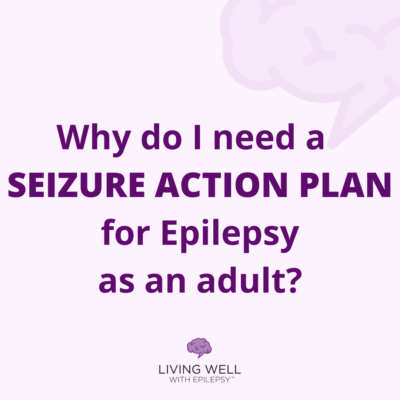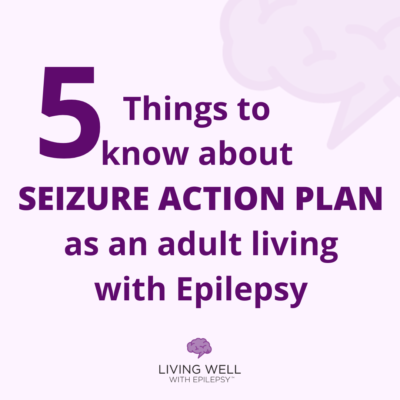
The sudden onset
Bob’s Dad was a healthy individual who played golf for exercise and leisure, sticking to his diet. In fact, he had been playing golf the day he became ill. His Dad came home from the golf course feeling disoriented. The seizures started by the time they reached the hospital that evening. The next eight weeks were spent running multiple lab tests, x-rays, and scans.
According to the family, communication was not ideal between hospital staff and the family; however, they did work together trying to come up with a possible reason his Dad was presenting with multiple seizures. All tests came back negative which left doctors perplexed about the situation. They used heavy steroid dosages to control swelling which helped his Dad recover enough to be awake. During this time, he was also on seizure medications to control the Status Epilepticus. Soon, the steroids were scaled back per protocol and the seizures returned in full force. Bob saw his Dad lose his adaptive daily skills, but remained hopeful for an answer, driving to the hospital each day. He was able to make his Dad smile, even in the end. His Dad was admitted to the hospital on October 3rd, 2019 and passed away on December 24, 2019.
New-Onset Refractory Status Epilepticus (NORSE)
It is hard to cope with the death of a family member, then throw in a cause that is not defined but is simply an explanation. New-Onset Refractory Status Epilepticus (NORSE) is that rare condition presenting in approximately 3,000 people per year in the United States. The prolonged seizures that occur with NORSE stem from a variety of issues including infections, strokes, metabolic, or idiopathic. The symptoms can be seen within 24-72 hours of presentation with many individuals making a recovery. Those who recover sometimes need lifelong needed supports (National Organization for Rare Disorders, 2020).
Others do not get their second chance, leaving the mortality rate of NORSE at about 30%. This means around a thousand people will die this year with no firm diagnosis, but a set of symptoms and small explanation. This leaves the family left behind wondering if there was something that could have been done differently? Could medical treatment have been different? Were there signs they missed?
A Clinical Description
According to NORD, New-onset refractory status epilepticus (NORSE) is defined as a condition, not a specific diagnosis, with new onset of refractory status epilepticus without a clear acute or active structural, toxic or metabolic cause in a patient without active epilepsy. Status epilepticus (SE) is a condition of prolonged seizure activity or repeated seizures without full recovery in between. Status epilepticus that persists despite at least two standard anti-seizure medications is termed refractory status epilepticus (RSE). Most of the common causes of RSE can be identified within 24-72 hours of presentation.
Febrile infection-related epilepsy syndrome (FIRES) is a subcategory of NORSE that requires a prior febrile infection starting between 2 weeks and 24 hours prior to onset of refractory status epilepticus, with or without fever at onset of status epilepticus.
In up to half of the cases of NORSE, a possible or probable cause is ultimately found, most often autoimmune or paraneoplastic encephalitis, with infectious causes less common. In the remaining half or more, no cause is identified despite an extensive work-up.
Timing is important
The “diagnosis” of NORSE for his Dad did not come until postmortem. Bob realized that communication between family and healthcare professionals is crucial. Seizures are scary and that first 24 hours seem to be pivotal for a neurology unit to get in for the evaluation. That is the one regret he has is not getting his Dad to the neurology clinic sooner (B. Dibuono, personal communication, November 2020).
Our epilepsy shows us the fragility of human life. We do not know when our time will come when our souls will be released from the physical body. It is our job to live life being happy, doing what is right by us. Take the time to express love in all forms of communication to each other. It is our responsibility to educate on seizure safety but not dwell on the “what ifs” in life. Bob has been my friend for thirteen years. I have seen him grow as a comedian, supporting him all the way. His father is with him, proud of the man he has become on this Earth. Keep making us laugh Bob. We need it.
Story originally shared on: https://ourlifewithautismsite.wordpress.com/2020/11/23/sudden-loss-sudden-grief/
References:
National Organization of Rare Disorders (NORD). (2020). NORSE (New Onset Refractory Status Epilepticus) and FIRES (Febrile Infection-Related Epilepsy Syndrome). Retrieved from https://rarediseases.org/rare-diseases/new-onset-refractory-status-epilepticus-norse/









Leave a Reply